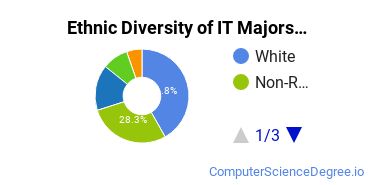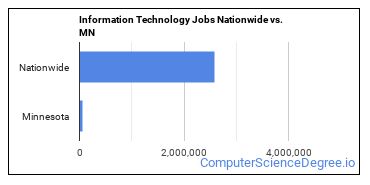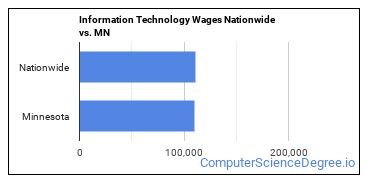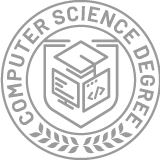Information Technology Schools in Minnesota
468 students earned IT degrees in Minnesota in the <nil> year.
As a degree choice, Information Technology is the 3rd most popular major in the state.
Featured schools near , edit
Education Levels of Information Technology Majors in Minnesota
IT majors in the state tend to have the following degree levels:
| Education Level | Number of Grads |
|---|---|
| Bachelor’s Degree | 229 |
| Master’s Degree | 104 |
| Post-Master’s Certificate | 55 |
| Postbaccalaureate Certificate | 55 |
| Award Taking Less Than 1 Year | 36 |
| Associate Degree | 22 |
| Doctor’s Degree (Research / Scholarship) | 21 |
| Doctor’s Degree (Professional Practice) | 21 |
| Doctor’s Degree (Other) | 21 |
| Award Taking 1 to 2 Years | 1 |
| Award Taking 2 to 4 Years | 1 |
Gender Distribution
In Minnesota, a it major is more popular with men than with women.

Racial Distribution
The racial distribution of it majors in Minnesota is as follows:
- Asian: 11.8%
- Black or African American: 11.5%
- Hispanic or Latino: 4.7%
- White: 38.7%
- Non-Resident Alien: 23.3%
- Other Races: 10.0%

Jobs for Information Technology Grads in Minnesota
60,730 people in the state and 2,578,690 in the nation are employed in jobs related to it.

Wages for Information Technology Jobs in Minnesota
IT grads earn an average of $110,330 in the state and $111,130 nationwide.

Most Popular Information Technology Programs in MN
There are 7 colleges in Minnesota that offer it degrees. Learn about the most popular 7 below:
14 to 1 is the student to faculty ratio. This private school has an average net price of $28,142. Most students complete their degree in 4.15 years.
In their early career, Capella University grads earn an average salary of $36,939. 100% of students are awarded financial aid at this school. This private school has an average net price of $17,840.
This public school has an average net price of $17,488. Students enjoy a student to faculty ratio of 21 to 1. Most students complete their degree in 4.56 years.
The student to faculty ratio is 13 to 1. The full-time teacher rate is 30%. The student loan default rate is 1.40% which is lower than average.
52% of the teachers are full time. Grads earn an average early-career salary of $37,257 after earning their degree at this institution. This school boasts a lower than average student loan default rate of 3.40%.
In their early career, Winona State grads earn an average salary of $49,054. This public school has an average net price of $17,546. Students enjoy a student to faculty ratio of 16 to 1.
Of all the teachers who work at the school, 49% are considered full time. Of all the students who attend this school, 95% get financial aid. 14 to 1 is the student to faculty ratio.
Information Technology Careers in MN
Some of the careers it majors go into include:
| Job Title | MN Job Growth | MN Median Salary |
|---|---|---|
| Computer and Information Research Scientists | 25% | $130,830 |
| Information Security Analysts | 24% | $95,360 |
| Software Applications Developers | 24% | $95,220 |
| Computer and Information Systems Managers | 8% | $138,310 |
| Computer Systems Analysts | 6% | $90,030 |
| Computer Network Architects | 5% | $108,640 |
| Systems Software Developers | 2% | $106,290 |
Related Majors in Minnesota
Below are some popular majors in the state that are similar to it.
| Major | Annual Graduates in MN |
|---|---|
| General Computer Science | 207 |
| Other Computer Sciences | 4 |
| Artificial Intelligence | 3 |
| Informatics | 1 |
View all majors related to Information Technology
Explore Major by State
Alabama
Arkansas
Connecticut
Florida
Idaho
Iowa
Louisiana
Massachusetts
Mississippi
Nebraska
New Jersey
North Carolina
Oklahoma
Rhode Island
Tennessee
Vermont
West Virginia
View Nationwide Information Technology Report
References
More about our data sources and methodologies.
Featured Schools
 Request Info
Request Info
|
Southern New Hampshire University You have goals. Southern New Hampshire University can help you get there. Whether you need a bachelor's degree to get into a career or want a master's degree to move up in your current career, SNHU has an online program for you. Find your degree from over 200 online programs. Learn More > |





